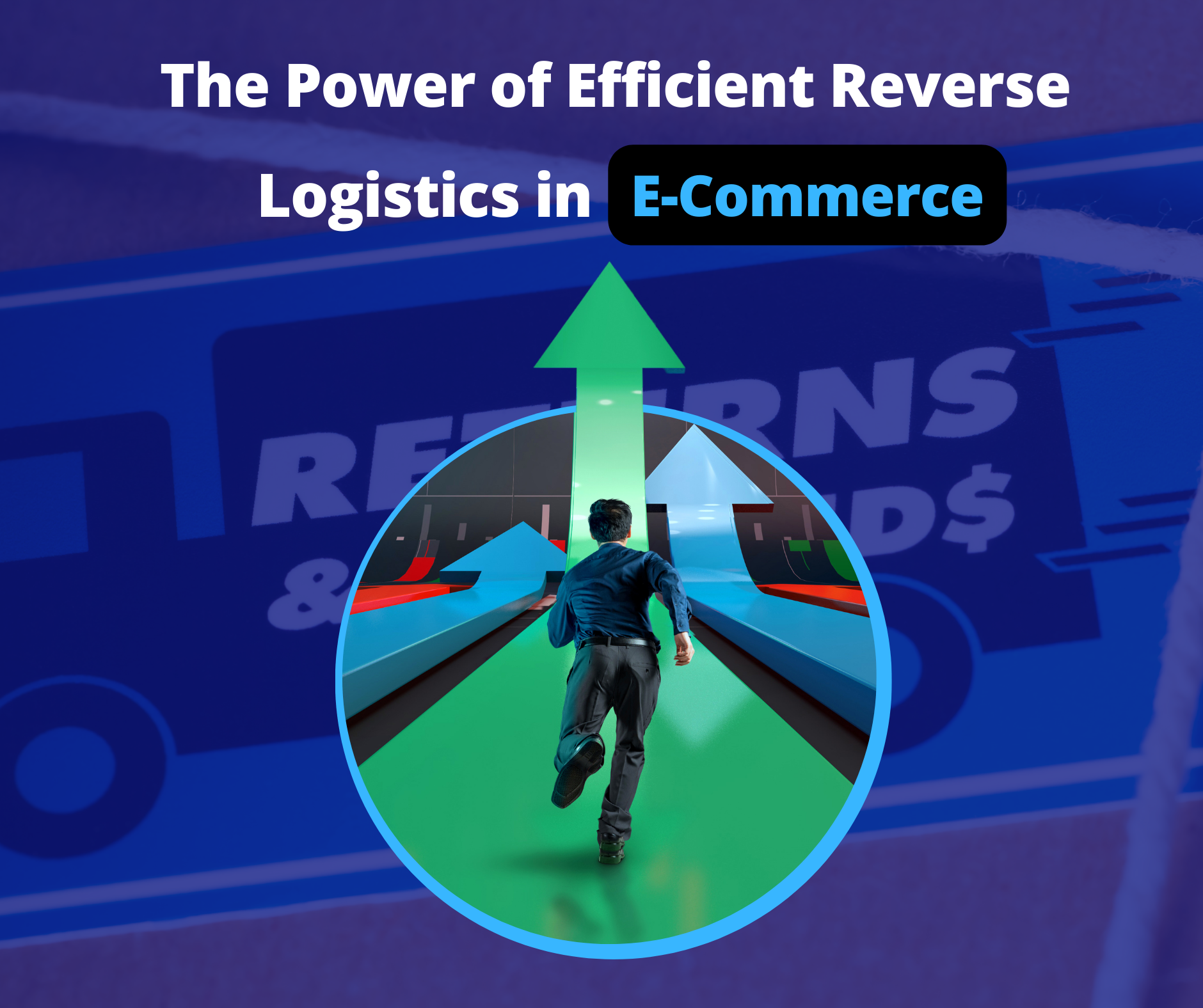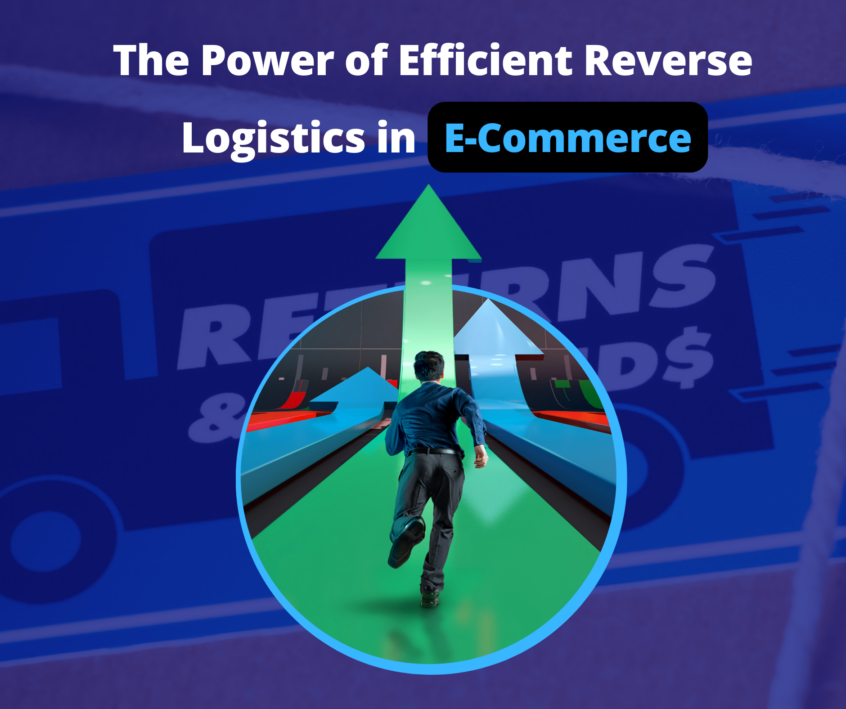
In today’s hyper-competitive world of e-commerce, staying ahead requires meticulous attention to every aspect of the product delivery and return experience. From the initial purchase to the return process, e-retailers, D2C (Direct-to-Consumer), and e-commerce brands must meticulously orchestrate each step. One critical aspect that is increasingly gaining prominence in this process is reverse logistics. Customers now scrutinize return policies before purchases, making seamless reverse logistics a pivotal element for e-commerce brands.
Reverse logistics, a previously overlooked part of the supply chain process, is now under the spotlight due to the growing demands of the online retail sector and evolving customer expectations. Companies, including independent D2C businesses, must innovate and adapt to these changes in reverse logistics to remain competitive.
The “India Reverse Logistics Market Report 2022-2027” predicts that India’s reverse logistics market will reach USD 39.81 billion by 2027, with a CAGR of 6.15%. Globally, the reverse logistics market is set to reach USD 858.8 billion by 2028, according to IMARC Group, exhibiting a CAGR of 5.5% during 2023–2028. However, reverse logistics processes vary across industries, offering distinct advantages for each sector. In this article, we explore the world of reverse logistics and its role in enhancing the bottom line of e-commerce businesses.
Understanding Reverse Logistics
Reverse logistics is the process of goods moving from the end user back to the seller or manufacturer. This process encompasses returning surplus goods from e-commerce and retail outlets, individual customers, or items requiring remanufacturing or refurbishment. These products can be resold or permanently disposed of.
The various facets of reverse logistics include:
- Remanufacturing: rebuilding a product with used or new parts
- Refurbishment: moderate repair of products not requiring remanufacturing
- Resale: reselling returned products in good condition
- Returns management
- Recycling and waste management
- Warranty management
- Repairs and maintenance
- Repackaging
The 5 Core Rs of Reverse Logistics
Effective reverse logistics management is a pivotal aspect for e-commerce businesses aiming to enhance customer satisfaction, reduce costs, and maximize profitability. E-commerce companies can employ five core metrics in their reverse logistics processes to achieve these objectives:
1. Returns
Returns are a fundamental component of reverse logistics in e-commerce. When a customer initiates a return request for a product purchased online, the e-retailer’s role is to facilitate the smooth execution of this process. This typically involves collaborating with a logistics partner to arrange for the efficient pickup of the returned item and subsequently processing a refund to the customer. An effective return process demonstrates a commitment to customer service, helping maintain customer trust, which is vital in the competitive e-commerce landscape.
2. Repairs
Products returned due to manufacturing defects or damage often require a comprehensive evaluation and subsequent action. In cases where the product can be salvaged, it is returned to the manufacturer. Here, the manufacturer undertakes remanufacturing or proper disposal in cases of irreparable damage. However, if the product is in a condition deemed suitable for resale after repairs, it is directed back into the inventory. This minimizes losses for the e-commerce business and ensures that customers receive high-quality, fully functional products.
3. Recycling/Refurbishment
Recycling and refurbishment play a significant role in the sustainability aspect of reverse logistics. Products that can be salvaged with minor adjustments and refurbishments are a valuable resource. These adjustments can range from cosmetic enhancements to functional improvements aimed at restoring the product to a saleable condition. On the other hand, items unsuitable for resale are earmarked for recycling. This commitment to recycling aligns with environmental norms and presents opportunities for businesses to partner with recycling specialists and contribute to a circular economy.
4. Repackaging
The repackaging step in reverse logistics is a crucial one, especially for items that have been refurbished or are in perfect condition. After a rigorous quality check, returned products can follow two paths. If a product is found faulty even after refurbishment, it is returned for further repairs or disposal. However, if the product passes the quality check, it is either refurbished, if necessary, or simply repackaged. This repackaged product then reenters the inventory, ready to be dispatched for a new order. This process not only reduces waste but also ensures that customers receive products that are in pristine condition.
5. Reselling
The final and most rewarding step in reverse logistics is reselling. After undergoing the necessary processes—returns, repairs, refurbishments, and repackaging—the product is now primed for its second life. It is dispatched from the inventory to fulfill a new order, completing the circular journey of the product. For e-commerce businesses, this step recoups losses and generates revenue and profitability. By ensuring that returned items can be resold, e-commerce companies can maximize the value of their products and enhance their bottom line.
Incorporating these five core metrics into the reverse logistics framework streamlines the process and unlocks several benefits for e-commerce businesses. It promotes customer satisfaction, reduces the environmental footprint through recycling efforts, and minimizes losses associated with returns. Moreover, it adds an additional revenue stream by enabling the resale of refurbished products.
Why Reverse Logistics is Essential for E-commerce
A well-structured reverse logistics mechanism brings stability and continuity to a business’s supply chain. It ensures a 360-degree perspective on product delivery, leaving no gaps in meeting customer expectations. Beyond this, it reduces costs, lowers risks, adds value, and completes the entire product life cycle. Research indicates that approximately 70% of businesses aim to invest in the ‘circular economy.’ Companies can actively participate in a sustainable economic system by establishing a reverse logistics process. Today, companies experiment and innovate to create new use cases for discarded products through recovery, repair, and recycling. A seamless reverse logistics process not only salvages and resells products but also creates opportunities by partnering with recycling specialists.
Improving the Reverse Logistics Process
Smart companies leverage reverse logistics to foster customer loyalty, encourage repeat business, and minimize losses associated with returns. Reverse logistics play a pivotal role in service lifecycle management (SLM). With improved planning, management, and execution, it can become more efficient and profitable. Many companies are now focusing on reverse logistics to mitigate the impact of large-scale returns becoming a cost center. The correct handling of returns can prevent distributors and retailers from overstocking, which can inflate inventory costs for manufacturers. Proper product disposal can also reduce penalties due to non-compliance with environmental norms while maximizing recovery on returned goods.
Creating Value Through Reverse Logistics
Reverse logistics presents an opportunity to convert waste into sales and build customer trust. Effective reverse logistics also helps keep storage and distribution costs low. Some businesses segregate their forward and reverse logistics processes, while others integrate them. Integration success depends on factors such as a company’s experience, the value of its products, and the volume of returns. Both approaches aim to maximize profitability ratios in supply chain activities.
Optimizing Reverse Logistics
Optimizing reverse logistics offers financial benefits and positively impacts the overall business environment. For large e-commerce brands, a swift reverse logistics process helps build customer trust. Operating at scale allows them to absorb return-related charges and losses comfortably. Conversely, small e-retailers benefit by minimizing losses through swift return-to-inventory processes. In addition, effective reverse logistics generates valuable data from customer interactions after delivery. This data provides insights into the strength of the organization’s supply chain, logistics partners, and opportunities for product improvement and enhancing the overall customer experience.
Wrapping Up
Reverse logistics is no longer a secondary consideration in the world of e-commerce; it’s a critical component for raising the bottom line. Efficiently managing returns, repairs, refurbishments, recycling, and reselling saves costs and creates new revenue streams. By optimizing reverse logistics, businesses can foster customer loyalty, reduce environmental impact, and ultimately enhance profitability. As the e-commerce landscape continues to evolve, embracing the potential of reverse logistics is essential for staying competitive and profitable in this dynamic industry.




